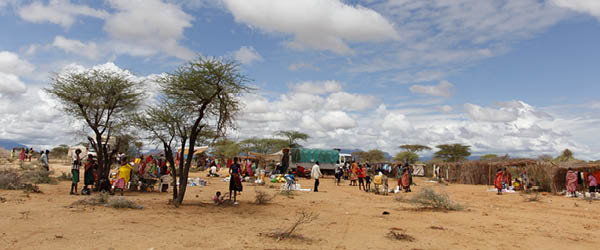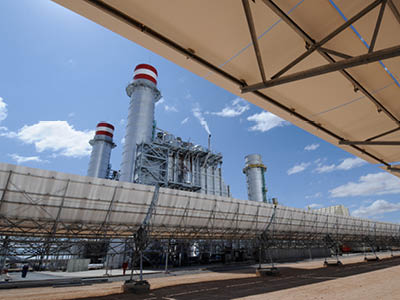Research Brief
The implications of climate change for the extractive industries
Climate change is one of the most complex and urgent of global issues due to its potential impacts and the policies and measures needed to address those impacts. Both are potential game changers for the Earth’s biosphere, ways of life, and economic development into the twenty-first century and beyond. Climate change will impact the extractives sectors in a number of ways, generating both threats and opportunities.
There are four main ways in which climate change will affect the extractive industries
The bio-physical impacts of a changing climate will affect capital investments, operations, and supply chains
Core fossil fuel commodities may come under pressure as cleaner energy generation is adopted, though this is likely to be a gradual shift
Regulations on water and energy use will have implications for daily operations
The demand for certain metals may increase as investments in infrastructure are made for a ‘net zero carbon’ future
Bio-physical impacts are expected on capital investment and operations
The industry faces a wide range of environmental challenges to its operations as the result of rapidly changing climate. Extractives industries operate at the ‘front lines’ of the natural world, often in comparatively extreme and isolated environments that are more likely to suffer the effects of climate change. The industry also relies on global supply chains for material inputs and product exports; these chains are vulnerable to unexpected climatic events and sea level rises. This poses risks for operations and supply chains.

Impact evaluation models are being developed in the industry to examine occurrence probabilities, who will be affected, the expected duration of impacts, and whether impacts will directly or indirectly affect extractives-based activities. The industry’s proficiency in risk management and planning should be a relevant factor when developing appropriate climate resilient/adaptation policies in mining areas.
A shift to clean energy has implications for core fossil fuel commodities
Recent research has suggested that an immediate and radical reduction in the use of fossil fuels — such as coal, oil, and gas — will be necessary for governments to meet commitments made in the Paris Agreement, leaving large multinationals with considerable stranded capital assets. However, the implementation possibilities of different low-carbon pathways as well as the will needed to meet commitments are still unclear. Initially the change is likely to be gradual, with the potential for significant impacts by the end of the century.

Improved energy efficiency and the use of Carbon Capture and Storage (CCS) represent two possibilities for a more gradual shift away from fossil fuels. These could help abate the costs and challenges associated with the transition to a renewable future.
Increased costs for energy efficiency, and water and ecosystems regulation in daily operations
Even outside of fossil fuels, there will be considerable regulatory and pricing pressure to decrease greenhouse gas (GHG) emissions, and energy and water use in operations. Policy measures are likely to come in two main forms: price-based measures such as market-based instruments or economic incentives; and regulatory or command-and-control instruments.
Whatever form policies take, industry will need to respond to the challenge of reducing energy and water consumption. An increasing number of multinational extractive-based companies are already doing so by integrating cleaner energy plans into their global operations. The deployment of renewable energy across the international mining sector is projected to increase in the coming years.

Future commodity markets in a ‘net zero carbon’ future
A ‘net zero carbon’ future presents some opportunities for the extractives industry. Low-carbon energy technologies require certain metals and materials, and these needs are higher than those for traditional fossil fuel technologies. This is likely to result in increased demand for certain minerals and metals in the future. Shifting to a net zero carbon future will also require large investments in new infrastructure — such as non-carbon power providers (e.g., hydro and nuclear), renewable power technologies (e.g., wind turbines and solar panels), zero emission buildings, hybrid/electric transportation vehicles and alternative transportation modes (e.g., rail). Minerals and metals will play a key role in the transition to a significantly lower-carbon future.
An integrated approach that brings together all relevant contributors to land and water use is needed to protect local communities and the environment
Clear policy signals, particularly from national governments, are necessary to ensure that effective climate change actions are taken
Hybrid policies that combine market-based prescriptions with regulatory mechanisms are needed to promote low-carbon growth
Metal recycling will be a priority as the demand increases to meet a net zero carbon future
A number of metals on which these technologies depend are, however, becoming increasingly scarce and have limited opportunity for substitution. Increased recycling of metals may become a priority to secure a net zero carbon future.
 Join the network
Join the network